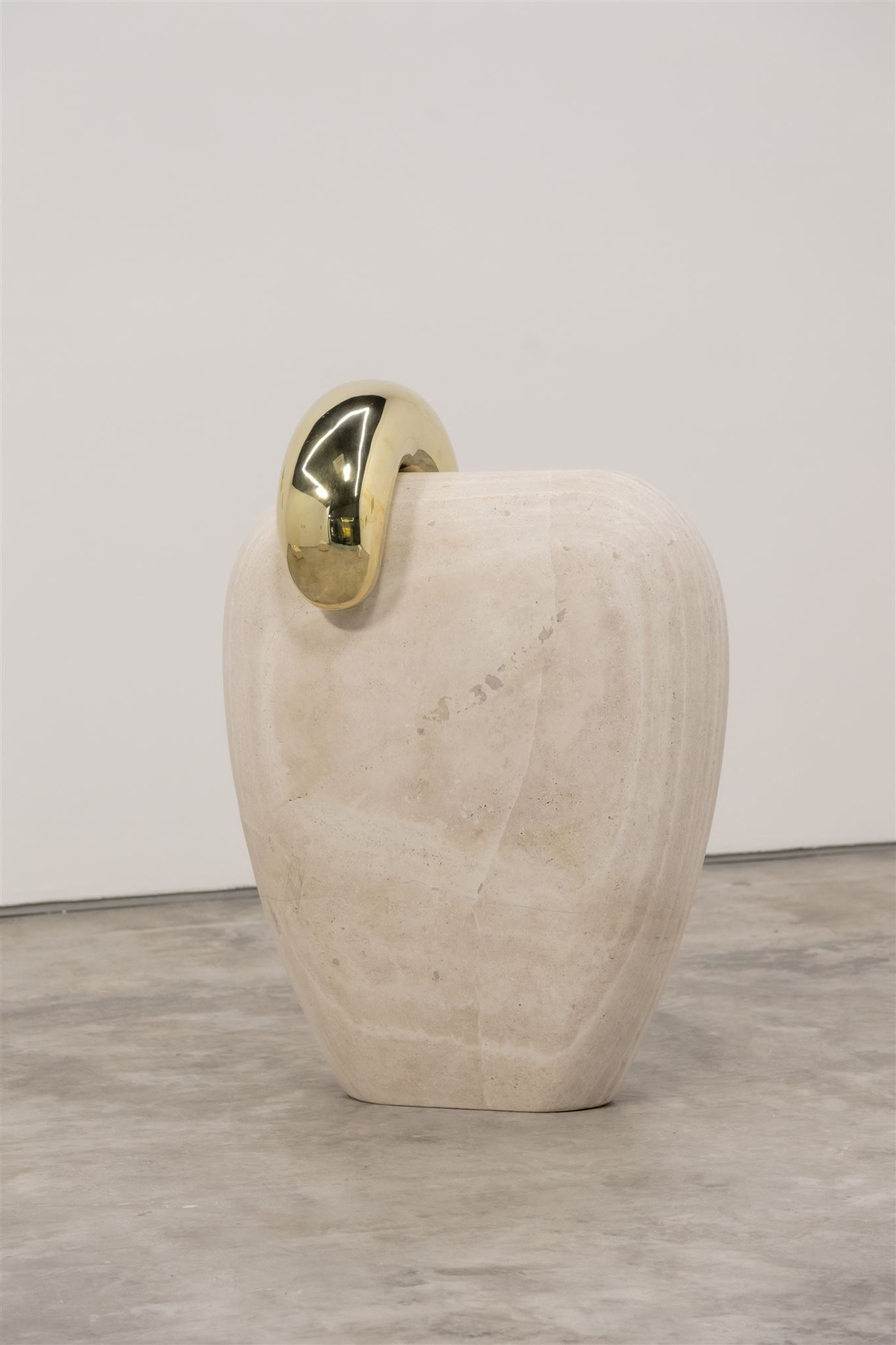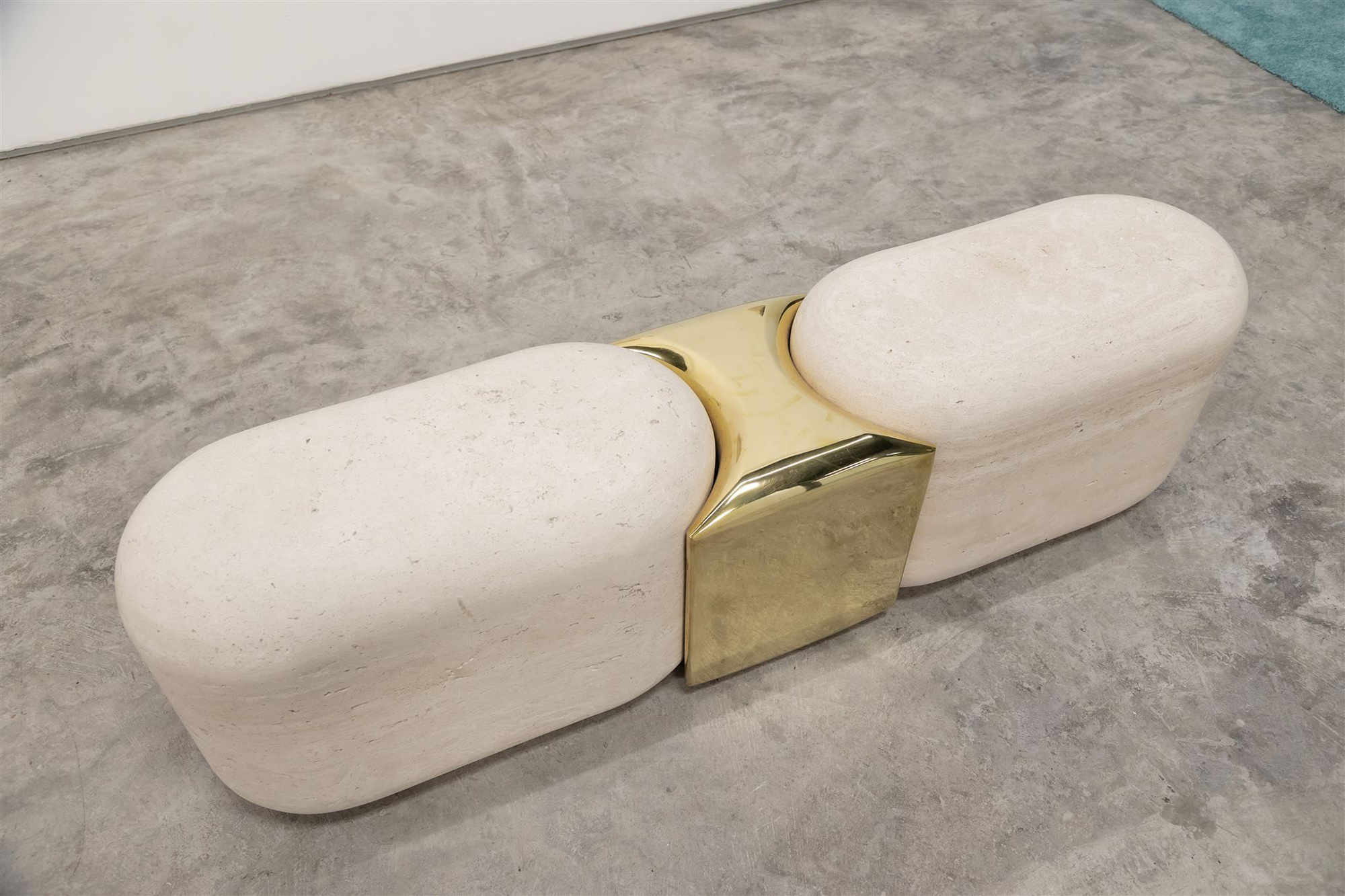Adeline de Monseignat: skin to skin
PRODUCTION: Ademán
product photography:
Adeline de Monseignat

For a creative individual, the act of going to sleep could be considered a mere formality to regain energy. For Adeline de Monseignat, a talented Dutch artist who has called Mexico her home since 2017, dreams are not confined to the nocturnal realm; they manifest in her daily life and in the visions of a future that crystallizes artistic goals. Every dawn, she awakens with a fervent passion that drives her to explore various domains as a sculptor, and currently, her exciting exhibition "Skin to Skin" has been captivating Monterrey since September 2023.
"Skin to Skin" is the title of her exhibition, a name that evokes the essence of motherhood and artistic creation in Adeline de Monseignat's mind. Her sculptures and artworks transcend time, transporting us through months of pregnancy, the first month of motherhood, and the deep connection that blossoms between mother and child. This intimate moment, known as 'skin to skin,' where the baby's skin caresses the mother's, is the epicenter of her artistic expression. In the language of medicine, this contact is an anchor of security for the child, an opportunity to explore, smell, and forge a bond that withstands the test of time.
A mother's journey to motherhood begins from the very first moment: nine months of complex dreams about what her child will be like, how the first touch and feeling will be, creating a sense of protection. During this time, she experiences the sensation of being one with her child. However, separation eventually arrives. Adeline de Monseignat, as she holds her child against her chest in a profound act, experiences an overwhelming sense of love that envelops the moment. A desire for fusion, to erase the boundaries between her and her child, recalling that intimate gestation period, emerges. Despite her desire, reality prevails, as the child is a unique entity. These reflections have significantly influenced Adeline de Monseignat's creative journey, leaving an indelible mark on her approach to sculpting materials, where a philosophy of "wabi-sabi," finding beauty in imperfection, is reflected.
In 2017, Adeline de Monseignat brought her artistic talent to Mexico with the intention of exploring the art of stone carving. However, what she found here was much more than a mere sculptural skill. This country captured her heart, triggering a series of events that would transform her life, including her encounter with her husband, the artist Pablo de Laborde Lascaris. 'Skin to Skin' is the culmination of that journey, an effort marked by trial and error, in which she recognizes and embraces the inherent flaws in the process: representing the feeling of what a mother experiences after giving birth. In a video available on her official Instagram (@adelinedemonseignat), Adeline expresses the intimate union of two bodies, one born from the other. In the unwavering quest to minimize the space between them to the absolute minimum. But it fails. This reflective process has left a profound imprint on Adeline de Monseignat's approach to sculpting materials. Her determination to shape, sculpt, and merge one material's surface with another, with the intention of minimizing the distance between them, is her way of confronting her internal struggle.
Ultimately, these sculptural creations do nothing but reflect the complexity of life.






INTERVIEWER
The most magical part of your day?
Adeline de Monseignat
Mornings. I wake up with a fire in my belly driven by all the fun projects awaiting me at the studio. Do what you love and you’ll never work a day in your life. How true that saying is! Then I hear “mama” coming from a tiny cot next door, and I’m reminded by my 2-year old that he is still and will always be my most precious one of all.
INTERVIEWER
What do you think about skin vs. stone?
Adeline de Monseignat
There is no wonder why stone has been used for so long to represent or refer to flesh and skin in figurative and even abstract sculpture. They both hold that perfect balance and tension between fragility and strength, and can reach similar levels of external “softness”. The temperature of stone, unlike human flesh, is of course devoid of warmth. Yet, once exposed to sunlight, outdoor stone can withhold a temperature that could fool one to believe that warm blood might be running through its actual “veins”. Bodies and stone both have veins, “hair”, bruises and imperfections. Their mirroring of one another have captivated artists and their public alike for centuries, especially in pieces like Bernini’s Rape of Proserpina where the stone looks so lifelike it becomes purely uncanny.
INTERVIEWER
Could you share your experience in creating 'In The Flesh,' and what has been the most rewarding aspect of this project for you?
Adeline de Monseignat
The process of creating "In The Flesh" was quite the adventure. I found myself out of my comfort zone, tackling three things I'd never done before: directing a film, performing without a single piece of clothing on, and collaborating with a team of 15 people on set. It was a learning experience, for sure. I picked up so much from my co-director and dear friend Nathalie Biancheri, as well as from the entire team. It taught me that our limits and possibilities can always be stretched further. Imagine being in the mountains, soaked and without any clothing - the conditions were quite challenging. But strangely, in moments like these, you reach a state of meditation that surpasses pain. I also gained a valuable lesson in humility and perspective as I faced the vastness of the mountain. Being in such close contact with marble gave me a whole new appreciation and respect for the material.
The most magical part of your day?
Adeline de Monseignat
Mornings. I wake up with a fire in my belly driven by all the fun projects awaiting me at the studio. Do what you love and you’ll never work a day in your life. How true that saying is! Then I hear “mama” coming from a tiny cot next door, and I’m reminded by my 2-year old that he is still and will always be my most precious one of all.
INTERVIEWER
What do you think about skin vs. stone?
Adeline de Monseignat
There is no wonder why stone has been used for so long to represent or refer to flesh and skin in figurative and even abstract sculpture. They both hold that perfect balance and tension between fragility and strength, and can reach similar levels of external “softness”. The temperature of stone, unlike human flesh, is of course devoid of warmth. Yet, once exposed to sunlight, outdoor stone can withhold a temperature that could fool one to believe that warm blood might be running through its actual “veins”. Bodies and stone both have veins, “hair”, bruises and imperfections. Their mirroring of one another have captivated artists and their public alike for centuries, especially in pieces like Bernini’s Rape of Proserpina where the stone looks so lifelike it becomes purely uncanny.
INTERVIEWER
Could you share your experience in creating 'In The Flesh,' and what has been the most rewarding aspect of this project for you?
Adeline de Monseignat
The process of creating "In The Flesh" was quite the adventure. I found myself out of my comfort zone, tackling three things I'd never done before: directing a film, performing without a single piece of clothing on, and collaborating with a team of 15 people on set. It was a learning experience, for sure. I picked up so much from my co-director and dear friend Nathalie Biancheri, as well as from the entire team. It taught me that our limits and possibilities can always be stretched further. Imagine being in the mountains, soaked and without any clothing - the conditions were quite challenging. But strangely, in moments like these, you reach a state of meditation that surpasses pain. I also gained a valuable lesson in humility and perspective as I faced the vastness of the mountain. Being in such close contact with marble gave me a whole new appreciation and respect for the material.
The video "In The Flesh," directed by Adeline, begins with a revealing quote that delves into the transformative power of stones: 'Everyone knows that stones weep... how they behave like sponges, their ability to bend and expand, and that, for those who know how to listen, they have a voice.' This quote sets a profound prologue for exploring the visual and artistic world that is presented. In this initial sequence, white mountains emerge from fierce winds and stand before statues and busts. A perceptible breath gives way to a poetic silence that immerses us in the feeling that the figures are communicating, perhaps in a different realm. This amalgamation of visual elements and the impression that sculptures are coming to life in an alternate space evoke the influence of multifaceted artists like the French poet and film director Jean Cocteau. Adeline de Monseignat, following a similar tradition to that of Cocteau, weaves various artistic forms into her work, giving life to a universe where stones and sculptures come to life and weave their own narratives.
Still, motherhood remains at the center of the universe.
Amid the serene setting of Casa Wabi's terrace, Adeline de Monseignat is soon to reveal a new astonishing outdoor sculptural installation, 'Uketamo.' With her artistic skill, she will bring to life a world of stone, mirrors, and pebbles, where dimensions shift with every gaze, challenging the boundaries of perception. Mounds will rise gracefully, their forms suggesting natural cradles. Here is where a metamorphosis takes place: the seeds that gave life will have departed, leaving empty shells, akin to a mother's postpartum journey, where a whisper denotes the profound change in energy.
With 'Uketamo,' she aspires to convey a universal truth: beauty isn't confined to abundance and strength but is equally at home within the void and vulnerability. It's the very essence of 'Uketamo'—to humbly accept with an open heart, an openness that parallels the fragility of the exposed cavities within the installation. Each of these voids, crowned with skyward-facing mirrors, beckons self-reflection, surrender, and a connection to ancestral wisdom.
Although Adeline de Monseignat works with the beauty of imperfection, all her works seem to achieve that the transition in her life is perfect.
‘Uketamo’ at Casa Wabi Sabino curated by Alberto Rios de la Rosa will open its doors to the public during Mexico’s Art Week on 6 February 2024.
Still, motherhood remains at the center of the universe.
Amid the serene setting of Casa Wabi's terrace, Adeline de Monseignat is soon to reveal a new astonishing outdoor sculptural installation, 'Uketamo.' With her artistic skill, she will bring to life a world of stone, mirrors, and pebbles, where dimensions shift with every gaze, challenging the boundaries of perception. Mounds will rise gracefully, their forms suggesting natural cradles. Here is where a metamorphosis takes place: the seeds that gave life will have departed, leaving empty shells, akin to a mother's postpartum journey, where a whisper denotes the profound change in energy.
With 'Uketamo,' she aspires to convey a universal truth: beauty isn't confined to abundance and strength but is equally at home within the void and vulnerability. It's the very essence of 'Uketamo'—to humbly accept with an open heart, an openness that parallels the fragility of the exposed cavities within the installation. Each of these voids, crowned with skyward-facing mirrors, beckons self-reflection, surrender, and a connection to ancestral wisdom.
Although Adeline de Monseignat works with the beauty of imperfection, all her works seem to achieve that the transition in her life is perfect.
‘Uketamo’ at Casa Wabi Sabino curated by Alberto Rios de la Rosa will open its doors to the public during Mexico’s Art Week on 6 February 2024.